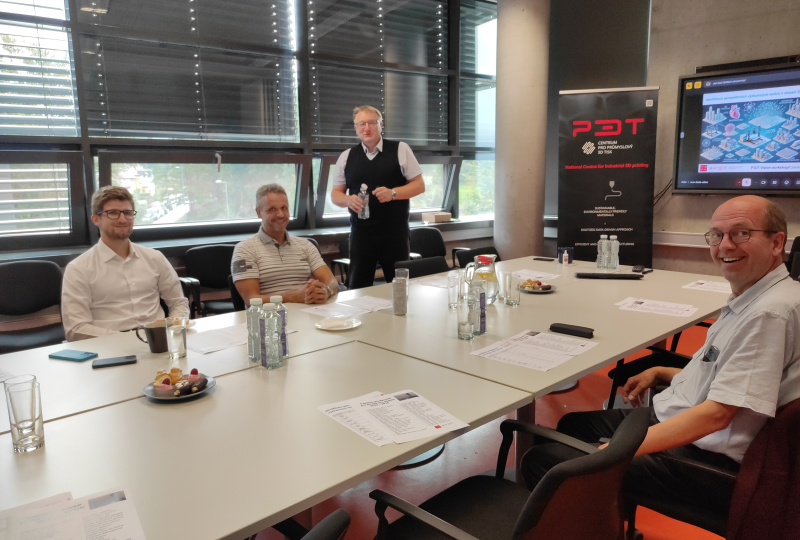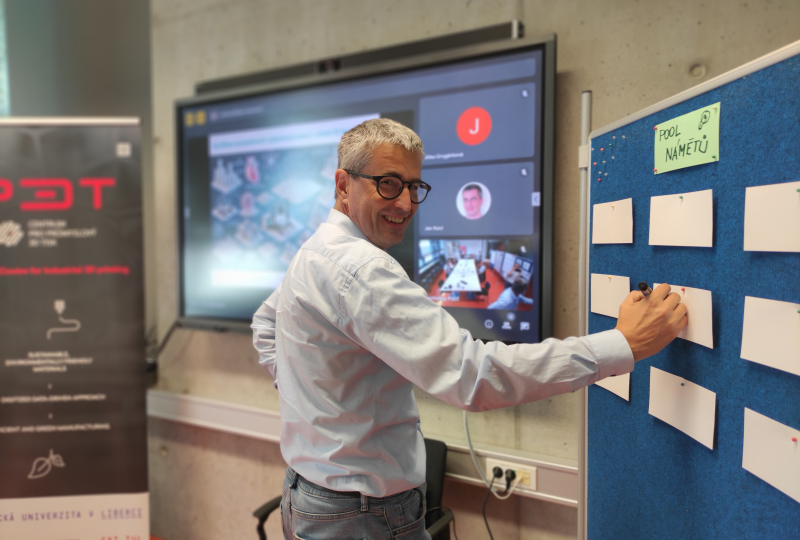Czech industry bets on 3D printing: key trends for the next decade
11. 9. 2024
Experts from research and business identified key directions for the coming decade at a meeting in Liberec.
The future of Czech industry has one of the main cards up its sleeve - 3D printing. During a workshop held on 10 September 2024 in Liberec, experts from the association's Centre for Industrial 3D Printing (P3DT) focused on the key trends that will shape the next decade of additive manufacturing. The aim was not only to identify promising directions, but also to provide the basis for strategic recommendations to the government. On the table are issues of sustainability, automation and new materials that can significantly increase the competitiveness of the Czech industry.

Jan Kočí: "Ecological filaments are a gamechanger"
One of the important topics was the ecological footprint of industrial production. Ecological filaments, i.e. environmentally friendly materials, are gradually making their way into practice. "Sustainability is crucial for Czech industry. Eco-friendly filaments, made from recycled or biodegradable materials, will be a gamechanger in the coming years. It is an opportunity to reduce the negative impacts of production and at the same time respond to growing market demands," says Jan Kočí, an expert on Industry 4.0 and AI from the Technical University of Liberec.

"We are linking these activities with other key experts, for example together with the MATCA Centre of Competence, which is why its representatives Tomáš Jetmar and Alexandr Dejneka were part of this workshop," says Jiří Šafka, 3D technology expert from CXI TUL.
Faster, bigger, greener
In addition to eco-friendly filaments, the experts focused on high-speed and large-area 3D printing. These technologies enable efficient and fast production for both consumer goods and industrial applications - for example, in the automotive or aerospace industries. Large-format printers are already capable of printing entire building structures or aircraft prototypes, and their adoption continues to grow. "Large-format printing and technologies such as high-speed 3D printing will take industrial production one step further," adds Koci.

Automation and AI come into play
Another major trend that has the potential to disrupt today's manufacturing is the automation of complete production processes. End-to-End workflow automation is becoming a reality, especially in the healthcare industry, where it already enables personalized, customized implant manufacturing. Artificial intelligence can then optimize the printing process and eliminate errors in real time.
The future that is already printing
What's next? The results of the workshop will serve as a basis for policy making that can shape the Czech R&D strategy until 2035. This could make the Czech Republic a leader in industrial 3D printing, especially with its emphasis on innovation in materials and automation. "We are facing a decade of challenges and opportunities. The key is to support those directions that will have not only economic but also social benefits," concludes Jan Kočí.





.png)
.jpeg)
.png)
.jpeg)
.png)
.jpeg)
.png)


.png)